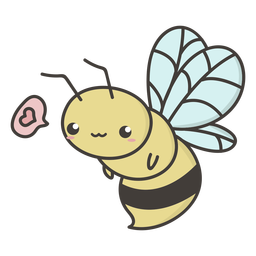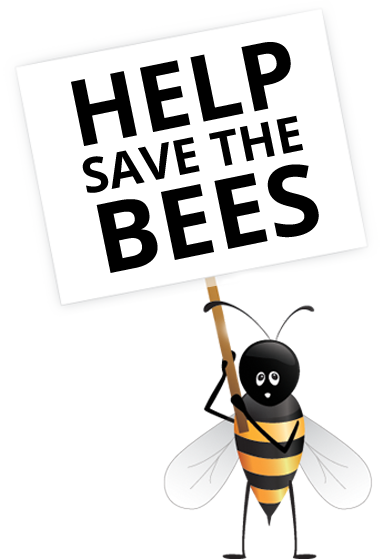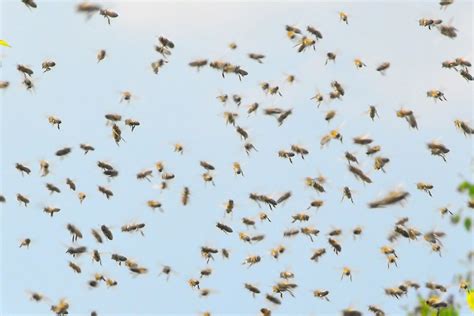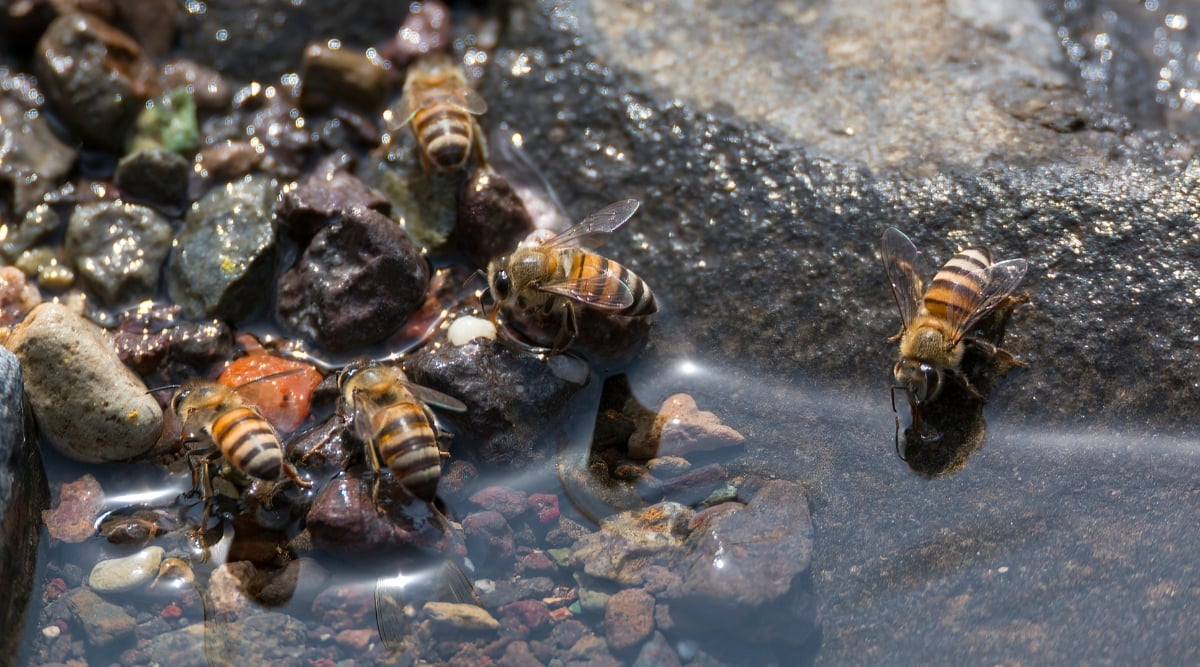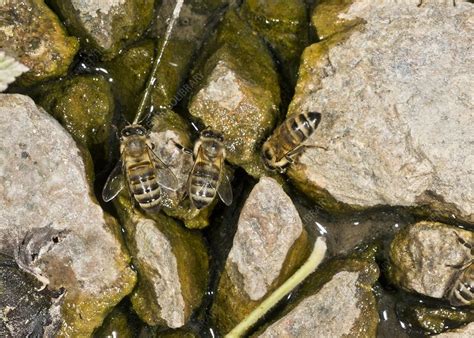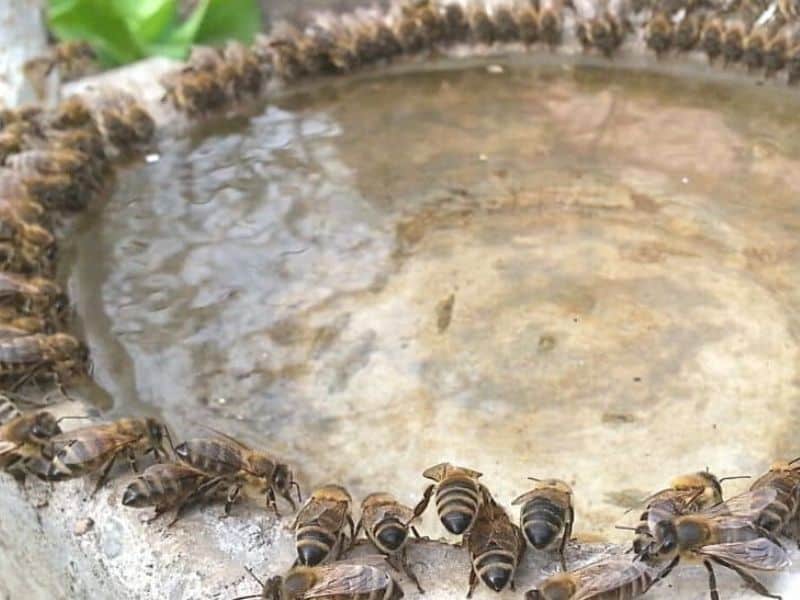Honey Bee Swarm Removal in Calgary
Hi, Calgary.
Got Honey Bees?
Note: Sorry, but we cannot assist with bumblebees, wasps, or hornets.
If you've found honey bees like these, please contact the Calgary District Beekeepers Association's Swarm Catcher service ASAP by emailing here with details.
When a colony of honey bees has grown beyond the capacity of their hive, the queen leaves the hive with roughly half of the workers and leaves behind a new queen and the other half of the workers. This is called a "swarm", which occur mostly in spring and early summer when a colony is growing and they need more space. Swarms are the natural way that bees use to ensure the survival of the species when one becomes two.
Prior to settling into a new home, these swarms will sometimes gather in a cluster, often in a tree. These swarms of honey bees are no threat to humans. They are simply trying to find a new home. Swarms don't care about you, unless they feel threatened.
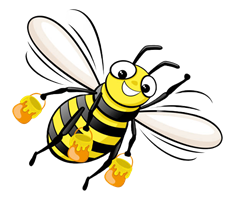 In fact, all of those honey bees filled (filled!) their bellies with honey before setting out on the trip, and so not only are they not looking for trouble, they're also sluggish because of the extra weight they're carrying (the honey).
In fact, all of those honey bees filled (filled!) their bellies with honey before setting out on the trip, and so not only are they not looking for trouble, they're also sluggish because of the extra weight they're carrying (the honey).
Swarm colonies are the start of a brand new independant colony. Unfortunately, with our extreme winters, they won't survive unless they find (or are put into) a suitable home, but beware; Capturing a swarm is not for the faint of heart.
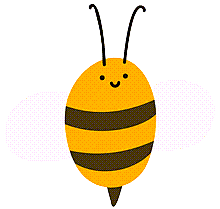
If you know of a swarm; please contact the Calgary District Beekeepers Association's Swarm Catcher service ASAP by emailing here with details.
Is it really a swarm?
Swarms consist of several thousand honey bees. If you're seeing only a small number of honey bees, chances are they're just curious about something or thirsty; If the spot they've found is wet in any way, just remove the water source and they'll stop coming back in a few days.
Are you sure they're honey bees?
If it’s very furry with hunched shoulders, it’s a bumblebee. (harmless!)
If they're black & orange, it’s a bumblebee. (harmless!)
If they have some blue or purple on them, it’s a bumblebee. (harmless!)
If they're in a birdhouse, it’s a bumblebee. (harmless!)
If they're nesting in the ground, it's either a bumblebee (harmless!), or it's a mining bee (harmless!), or it's a wasp/hornet a bumblebee. (NOT harmless!)
If it’s hairless, it’s a wasp/hornet. (call these fine folks)
Is the nest round/egg-shaped, and paper-like? wasps/hornets again!
If it’s bright yellow with no fuzz, it’s a wasp/hornet.
If it’s slightly furry, with a long tube-like shape, then it’s a honey bee!:
| Honey Bee | Bumble Bee | Wasp | Hornet | |
|---|---|---|---|---|
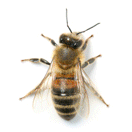 |
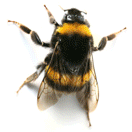 |
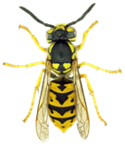 |
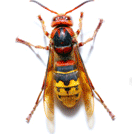 |
|
| Appearance | Fuzzy | Very fuzzy | Very slick; not fuzzy | |
| Demeanor | Curious | Lazy, almost drunk | Jerks | Assholes |
| Stinging | Can only sting once. | Can sting over and over again |
Do sting over and over again |
|
| Likelihood to sting | Only if they feel threatened | Rarely ever stings | Stings without warning or reason | |
| Pollination | Expert pollinator | Expert pollinator | Not a pollinator | |
| Nest Location | In trees, walls, boxes, sheds, etc | In birdhouses, sheds, underground | In trees, wall voids, on buildings, underground | |
| Nest type | Wax honeycomb, typically white-ish. | "Clumps of eggs stuck together with goo" | Usually paper-like | |
| Diet | Feed on nectar and pollen. | Feed on nectar and pollen. | Feed on other insects, nectar and fruit. |
|
| How best to handle |
Email here with photos & details | Just leave them be |
Burn them. Burn them all, straight to hell! ;) (I recommend these folks) |
|
Are they already in a structure?
If you have honey bees that have already entered a structure, they now consider that structure to be their home and their removal becomes a much more complicated process called a "cut-out".
Cut-outs can sometimes take many hours over multiple days, often require specialized equipment and skills, and almost always require repair to the building once the bees are removed.
Beware: Choosing to kill the bees will often result in even more structural damage than the removal process because once the bees are gone, there will be honey and wax that eventually attracts ants, mice, mold, and more. Additionally, leaving the nest in a structure will also attract new bee colonies, compounding the structural damage that can occur. The least expensive option is always to properly remove the bees and repair the property correctly.
We have members that perform cutouts for a fee; Please contact us for further information.
If it's a swarm, contact us!
When you contact the Calgary District Beekeepers Association's Swarm Catcher service by emailing here, they will need at least one photo or video of the honey bees, and will also want to know:
- Location in the city of the swarm (address, or at least area of the city)
- Location on the property of the swarm (on the ground, in a tree, in a roof, etc?)
- When did you first notice the honey bees, and what have you noticed about them?
They can not come without photo confirmation.
